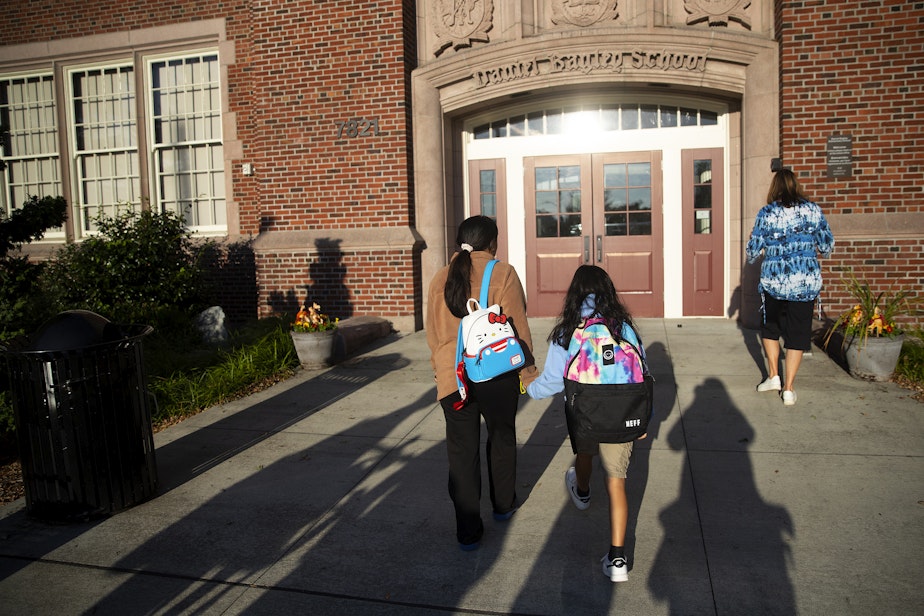Only half of WA students are reading at grade level, new test scores show

Just 50% of students across Washington state are reading at grade level, according to the state’s latest standardized test results.
Literacy rates declined during the pandemic and have yet to rebound.
Statewide English-language arts scores have remained stagnant the last two years, and about 10 percentage points below pre-pandemic levels.
Throughout Denisha Saucedo’s more than 20 years as an educator, she’s never seen her students be so far behind when they get to her fifth grade classroom at Kent Elementary.
“The gap is just widening,” Saucedo said. “There are a lot of students coming in reading at a kindergarten or first grade level. And my biggest concern last year was that there were kids showing absolutely no growth within three years.”
State math and science scores also remain lower than they’d been before Covid, with just under 40% and 43% of students meeting standards in math and science, respectively. Students are doing slightly better in math from last year’s 38%.
But some educators are more concerned about literacy rates.
Sponsored
Research shows literacy is key to a students’ future academic success. If a student is unable to read well by third grade, studies show they’re more likely to drop out of high school.
Saucedo believes one reason for her students’ academic decline is Covid, which struck when they were supposed to be learning foundational skills in earlier grades.
But Saucedo has a few other theories, including increasing class sizes and the growing number of teachers who leave the profession because they feel overworked, or they’re dealing with mental health challenges.
She also thinks skyrocketing absenteeism is to blame.
“Attendance is terrible,” Saucedo said. “Pre-Covid, kids missed a couple days out of the whole year. If a kid missed double digits, we were surprised.”
Sponsored
But that’s changed in recent years. Though an average student missed five to seven days of school every year, Saucedo had one student last year with 100 absences.
That’s why, Saucedo said, schools should provide incentives to both students and their parents for attending school regularly.




